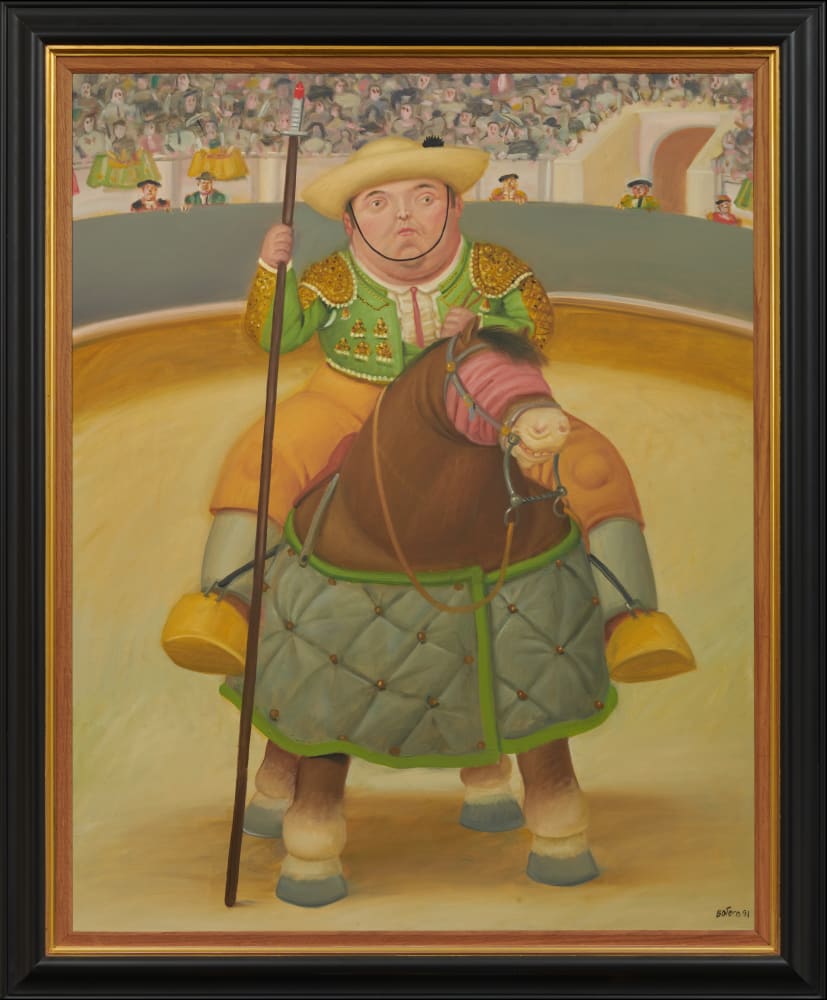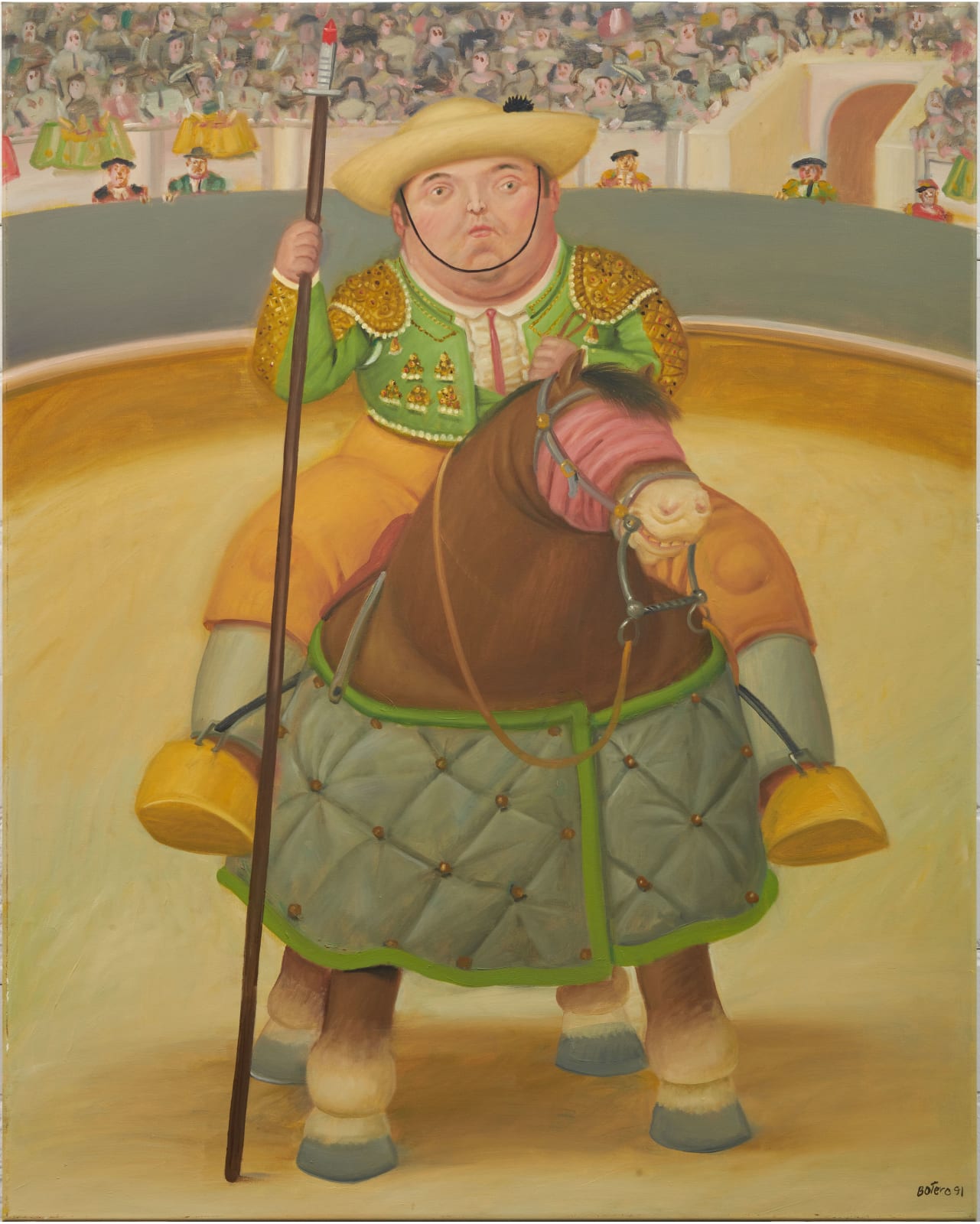


Fernando Botero
Further images
on The Bull ght. It was donated by Master Botero to the Focus
Foundation in Seville, where it has remained since 1992 in the
Foundation’s main site, the Venerable Priests Hospital, a baroque
building of the XVIIth century.
The Bullght has been one of the most important subjects in Master Botero’s career.
In fact, Botero was close to becoming a Bullghter, given that la esta brava was a
very important tradition in the Colombia he grew up in and his uncle, don Joaquín
Angulo, enlisted him in a school for banderilleros. Nonetheless, the artist has often
told that it was during his rst encounter with a real bull that he realized his future
laid in canvas and pencils and not in the arena.
Provenance
- Eduardo Trujillo Collection
- Botero Family Collection
- Foundation Focus Sevilla
- Maestro Botero Private Collection
Literature
Botero’s art works were adolescent copies of bullghting posters, which he sold in
the plaza’s ticket-box. However, as he developed his interest in volume and matured
as a painter, he completely forgot of this subject, which he did not approach again
until the mid-1980s, when he was already a consummated artist. And then, as his
son and art critic Juan Carlos has stated:
“it was as if the gates of a colossal dam had been opened. For years the master did
nothing else: he produced oils on canvas in different formats, charcoals, watercolors,
pastels, pencil and ink drawings, chalk and sanguine in hundreds and hundreds of
sketches, all related to the bull’s world, in a ood of energy and creativity that
seemed endless. His happiness at the time can only be compared to the joviality of
a miner who has suddenly stumbled upon a sparking seam of gold in the mountains”.
The result of such unbounded production was a string of important exhibitions of the
Bullght series in the most important cities of Europe and the Americas. Among them
was a show of oils, watercolors and drawings in 1992 in Seville, during the
legendary April Fair, in the Venerable Priests Hospital – his rst important exhibition
in Spain. “As a token of gratitude for the pleasant time we had there,” as Botero
wrote in a letter to the Focus Foundation later on, the artist decided to donate this
piece to that cultural home a few months afterwards.


